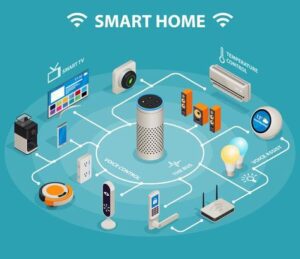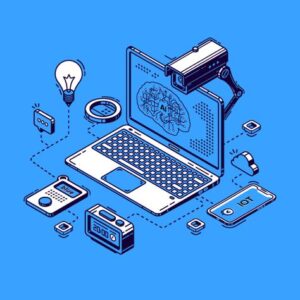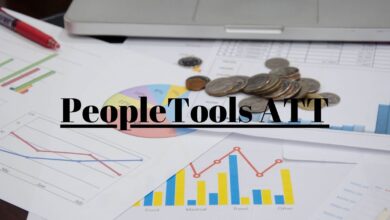What Exactly Are IoT Devices? Definition, Types, the Top 5 Most Popular in 2023

Kevin Ashton created the phrase “Internet of Things” (IoT) in 1999. IoT did not, however, start to gain widespread popularity until Gartner put it to its list of new emerging technologies in 2011. As of 2021, there were 21.7 billion active connected devices in the world, with IoT devices accounting for more than 11.7 billion (54 percent). This signifies that there are more IoT devices than non-IoT devices in the world.
What exactly is IoT?
The Internet of Things (IoT) is the term used to describe the billions of physical objects or “things” that are linked to the Internet and all of them gather and exchange data with other equipment and systems over the Internet.
Despite the fact that the Internet of Things has been there since the 1990s, new technological advancements, such as:
- Sensors that are both inexpensive and reliable
- Increased accessibility to cloud computing platforms
- Machine learning and AI technology advancements.
IoT devices can range from simple household kitchen appliances to complex industrial machines. Each IoT component has a unique identifier (UID) and may communicate data without human intervention.
IoT Classifications
The networking, communication, and connectivity protocols are heavily influenced by the IoT application installed. There are many various types of IoT applications dependent on their utilization, just as there are many different types of IoT devices. Here are a few of the most common:
- Consumer IoT is intended mostly for everyday use. Examples include home appliances, speech recognition software, and light fixtures.
- Commercial IoT is mostly employed in the healthcare and transportation industries. Smart pacemakers and monitoring systems, for example.
- Military Things (IoMT) – Term used to describe the use of IoT technologies in the military. For example, surveillance robots and combat biometrics that can be worn by humans.
- Industrial Internet of Things (IoT) – Used mostly in industrial applications such as manufacturing and energy. For example, consider digital control systems, smart agriculture, and industrial big data.
What is the Importance of IoT?What is the Importance of IoT?
The collaboration and interaction between the physical and digital worlds is made possible through the Internet of Things. It provides several benefits to businesses by allowing them to automate and simplify their regular processes.
Companies are utilizing the great commercial values that IoT can offer as it grows tremendously year after year. Here are some of the most significant advantages of IoT:
- to create new revenue sources and business models
- Improving business decisions with data-driven insights derived from IoT data
- to boost corporate operations productivity and efficiency
- to improve the consumer experience
Despite the fact that the economic impacts of the COVID-19 epidemic have had a substantial influence on global IoT spending, an IDC report suggests that it will grow at a CAGR of 11.3 percent over the next five years.
What Exactly Are IoT Devices?
IoT devices are tangible objects like sensors, gadgets, appliances, and other gear that physically collect and exchange data via the Internet. They are designed for specific applications and can be integrated into other IoT devices. For example, an IoT gadget in your car can detect traffic ahead and instantly notify the person you’re about to meet of your imminent delay.
How Do IoT Devices Operate?
Different IoT devices have different purposes, but they all function in the same way. To begin, IoT devices are tangible items that detect what is happening in the physical world. They typically include an integrated CPU, network adapter, and firmware and are linked to a Dynamic Host Configuration Protocol server. It also requires an IP address to operate on a network.

The majority of are configured and managed using a software application. For example, you could use a smartphone app to control the lighting in your house. Some devices additionally include built-in web servers, which eliminates the requirement for third-party software. When you enter a room, for example, the lights turn on immediately.
IoT Device Examples
Home Safety
IoT is the primary driving force behind smart and safe homes. IoT connects a multitude of sensors, lights, alarms, and cameras (all of which can be managed from a smartphone) to provide 24×7 protection.

Activity Monitors
Alerts and peace of mind are provided by smart home security cameras. Sensor devices that monitor and communicate vital health indicators in real time are known as activity trackers. You can monitor and control your blood pressure, hunger, physical activity, and oxygen levels.
Industrial Safety and Security
To detect trespassers, IoT-enabled detection devices, sensors, and cameras can be put in restricted locations. They can also detect pressure buildups and minor leaks of hazardous chemicals and repair them before they become major issues.
Glasses for Augmented Reality
Augmented Reality (AR) glasses are computer-enabled spectacles that allow you to add more information to your real-world settings, such as 3D animations and films. The data is shown within the glasses’ lenses and can assist users in accessing Internet applications.
Detection of Motion
Vibrations in buildings, bridges, dams, and other large-scale structures can be detected by motion sensors. These devices can detect structural flaws and disturbances that could lead to catastrophic breakdowns. They are also useful in locations prone to flooding, landslides, and earthquakes.
Top 5 IoT devices in popularity in 2023
1. The voice controller for Google Home
One of the most widely used Internet of Things devices nowadays is the Google Home voice controller. It offers voice-activated services for lighting, thermostats, volume control, and many other things.
2. Voice controller for the Amazon Echo Plus
Another well-liked and dependable IoT product on the market is the voice controller for the Amazon Echo Plus. It offers a variety of voice-activated functions, including call answering, timer and alarm setting, weather checking, and much more.
3. August Doorbell Cam
With the help of the Internet of Things (IoT) device Doorbell Cam, you can answer your door from anywhere. It continuously records motion changes and shady behavior at your doorstep.
4. August Smart Lock
August The IoT security tool known as Smart Lock enables users to control their doors from virtually anywhere. It adds another layer of security to your home and deters burglars.
5. Foobot
An IoT device called Foobot can precisely monitor indoor pollution. It aids in enhancing the quality of the air in homes, coffee shops, offices, and other indoor public areas.
IoT Has Endless Possibilities
Since the Internet of Things is still in its infancy, the projections for its future expansion are optimistic. We shall be connected in ways that are thought to be impossibly futuristic in the coming years. IoT and AI integration will open up new opportunities for inventive applications in a variety of sectors.

Frequently Asked Questions
What are 5 IoT devices examples?
Smart Mobiles, smart refrigerators, smartwatches, smart fire alarms, smart door locks, smart bicycles, medical sensors, fitness trackers, smart security system, etc., are few examples of IoT products
Is Alexa an IoT?
Examples of IoT devices are digital personal assistants like Alexa, Siri, and Cortana.
Is 5G an IoT?
5G is the first mobile network that has been designed from the ground up to support Internet of Things use cases (see 5G use cases for enterprises).
What IoT uses?
The following are some common uses for IIoT:
- Smart manufacturing.
- Connected assets and preventive and predictive maintenance.
- Smart power grids.
- Smart cities.
- Connected logistics.
- Smart digital supply chains.




